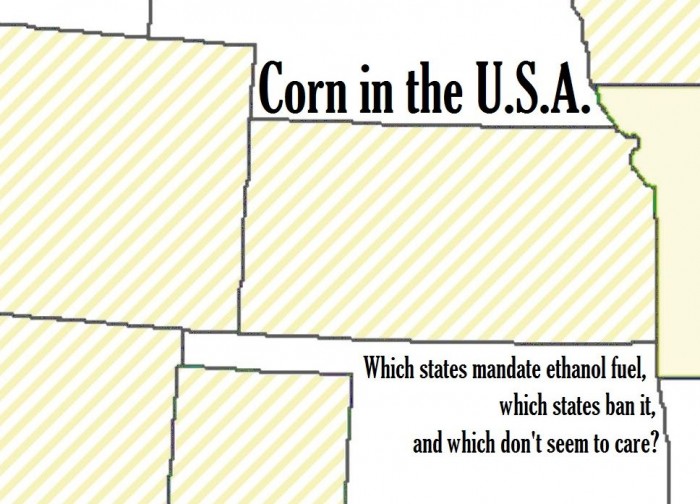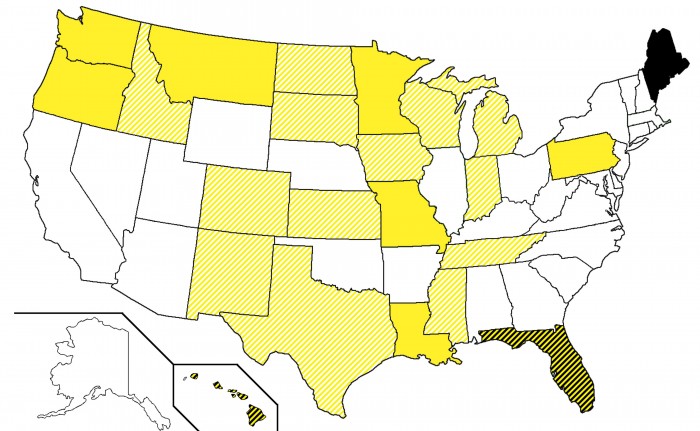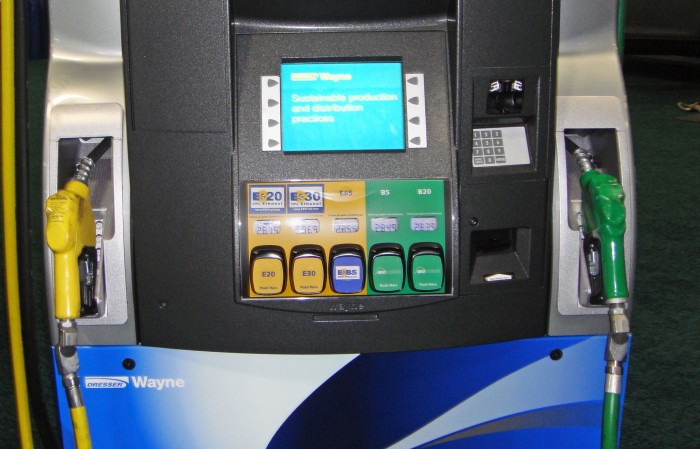Which states require ethanol in your fuel? Fewer than you might think
Posted on Jan 18, 2019 in Featured | 2 comments

Earlier this year, Hawaii became the second state to scrap its mandate that all gasoline sold in the state must have a certain amount of ethanol blended into it. Boaters and old-car enthusiasts who believe ethanol poses a threat to their engines cheered this move; at the same time, it made us wonder exactly how all 50 states have decided to legislate ethanol-blended fuel. Most of them probably mandate it by now, right?
Nope. Only seven states require E10 fuel. That’s down from nine total. And, in fact, at least a couple states’ legislatures have brought up the idea of banning ethanol-blended fuel entirely.
Indeed, ethanol policies across the 50 states are all over the map, as we discovered after looking up each state legislature’s record on the issue over the last 15 years. Some states investigated mandating E10 but couldn’t muster enough support for it; some mandated it with exceptions; some have conditionally approved ethanol-blended fuels based on the EPA’s stances; some haven’t even considered the issue at all.
To be clear, many of the states have supported the use of E10, E85, and other ethanol-blended and alternative fuels through incentives and purchases of official-use alternative-fuel vehicles. But we kept the scope of our survey limited to ethanol-blended fuel mandates and bans that impact the general public.

Key: yellow—mandates ethanol-blended fuel; yellow/white—considered mandating ethanol-blended fuel; yellow/black—repealed ethanol-blended fuel mandate; black—banned ethanol-blended fuel (provisionally); white—no position. Infographic by Zach Higgins.
As you should be able to see from our map, Louisiana, Minnesota, Missouri, Montana, Oregon, Pennsylvania and Washington all mandate ethanol-blended fuels. However, each state goes about their mandates a little differently.
Louisiana and Washington only mandate that 2 percent of the total volume of fuel in the state have ethanol blended into it, while the rest mandate E10. Minnesota, Montana, Oregon, and Pennsylvania mandate ethanol-blended fuel only if ethanol refineries in their states produce certain minimum amounts. And at least a few of the states—Minnesota, Missouri and Oregon—provide exceptions for older vehicles or for exempt premium gas from having to contain ethanol.
In all, 14 states have attempted to pass mandates—some of them multiple times—but failed. None have attempted to do so since 2009 except for Iowa, which has tried to mandate ethanol-blended fuels four times over the last decade.
As we mentioned before, Hawaii is one of two states to repeal its mandate. The other, Florida, eliminated its ethanol-requirement law in 2013. Hawaii’s repeal came after at least two other attempts—in 2011 and 2013.
Four other states have also made attempts to do away with their mandates: Minnesota (2009), Missouri (2008), Oregon (2011, 2013, and 2015) and Pennsylvania (2015). Oregon’s legislature has adjourned for the year, but Pennsylvania’s remains in session.
From the extent of our research, half of the states haven’t ever addressed ethanol-blended-fuel mandates for the general population. Gas station owners in those states and the other states without a mandate are free to sell whatever blend of fuel they feel their customers want: E0, E10, E15, E85, whatever.

Ethanol blender fuel pump. Photo by Mariordo.
On the other end of the spectrum, Maine’s legislature has consistently expressed a desire to not just abstain from such mandates but to ban the sale of ethanol-blended fuels altogether.
In 2013, the state passed a law prohibiting the sale of corn-ethanol fuel provided at least 10 other states or a number of states with a total population of 30 million also banned the fuel. Similarly, Texas—which looked into mandating ethanol-blended fuels in 2009—and New Hampshire have in recent years discussed their own bans on ethanol-blended fuels. Rather than banning ethanol-blended gasoline outright, North Carolina this year has discussed simply doing away with the gas tax on all unblended gasoline.
So, just as we’ve seen on the federal level lately, support for ethanol-blended fuels varies across the country and over time. By no means do those in power operate under any sort of consensus on it, and for most of the country, customers still technically have the option to go ethanol-free.





.gif)


I believe you confused Minnesota with Wisconsin. The state in yellow is Wisconsin but in the text you list Minnesota as a “yellow”, which is correct.
MN is yellow on my map; WI is light yellow.